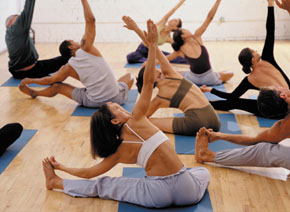Hi
guys!
Today
I would like to introduce the courage and self-confidence topic.
Self-motivation
and preparing oneself for an event/occasion etc.
Definition
of motivation can be found anywhere on the Internet : “Motivation is a psychological
feature that arouses an organism to act towards a desired goal and elicits,
controls, and sustains certain goal-directed behaviors. It can be considered a
driving force; a psychological one that compels or reinforces an action toward
a desired goal. For example, hunger is a motivation that elicits a desire to
eat. Motivation is the purpose or psychological cause of an action.
Motivation
has been shown to have roots in physiological, behavioral, cognitive, and social
areas. Motivation may be rooted in a basic impulse to optimize well-being,
minimize physical pain and maximize pleasure. It can also originate from
specific physical needs such as eating, sleeping or resting, and sex.
Motivation
is an inner drive to behave or act in a certain manner. Once I
came across a sentence on a website , psychologytoday.com : "It's the difference between waking up
before dawn to pound the pavement and lazing around the house all day."
These inner conditions such as wishes, desires, goals, activate to move in a
particular direction in behavior.”
But
how does the theory confronts with reality?
I found problems in motivating myself
on many occasions. I lacked in perseverance on completing my tasks before
deadline and suddenly it came to me like a shock - I had a problem, I realized
that from my school when I started getting bad marks because of not doing
tasks or doing them wrong, in a hurry. I read a lot and talked with my
friends about how they motivated themselves. Then a solution was
clear - no matter how many time I spent on thinking what I should do it didn't
bring me closer to achieve my goals. Then I tried the simplest thing ever – I
tried doing tasks on the same day or day after I received it. It was very hard
at the beginning but soon after I
noticed that my marks got better.
Now
I will tell you something about my friend.... It's a secret... I recently
talked to my friend about motivation and how life goes by. This is what I heard
from him: " I've wanted to start my driver's course since September last
year when I came back from the States. But I am the type of a person that needs time to process a lot of information
and, more accurately, I need to find time and motivation to enroll. So I wanted
to, but was too lazy to actually do the first step. :) However, I am the type
of person that makes decision REALLY quickly when I must or am forced to. For
example during my university years (I miss them!) when there was one (!) day
left to apply for another major (spanish Philology) and no time to lose, I
managed to get all the papers, take some necessary photographs of my horrible
face, fill in all the paperwork and officially apply. If I had had more than a
day (like maybe two weeks), I probably would not have done anything, and never
would have enrolled! The same thing was with this driver's course. As I was
saying, I wanted to but had no motivation. Then one of my work buddies (another
English teacher) said she had just enrolled and was waiting for the first
class. She asked me to join (as we spoke about the necessity of having a
licence a month before) and having NO
TIME to make up my mind, I decided "what the hell! It's time!" and
did it"
It
gave me lots to think about.
It's
basically about the first step - and then I either get involved or not.
How
is it with you guys?
Do
you need to force yourselves to get somewhere?
Do
you need someone to push you a bit?
Here
is some video about motivation I found:
























